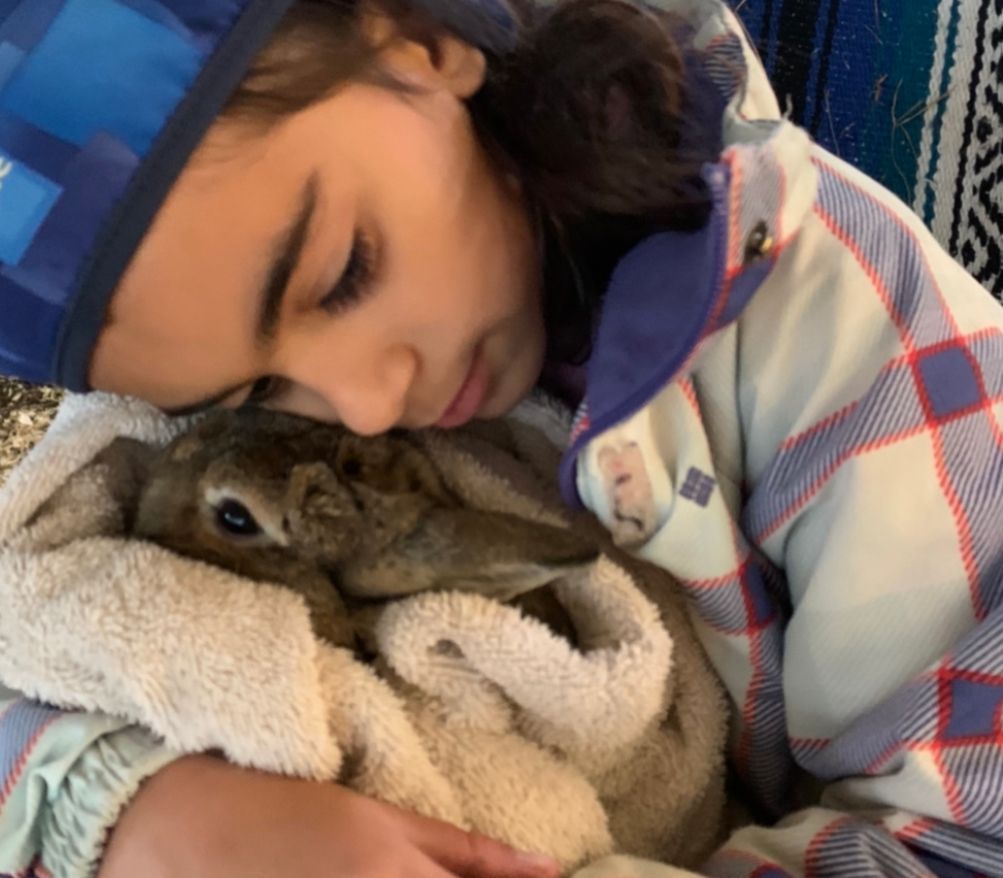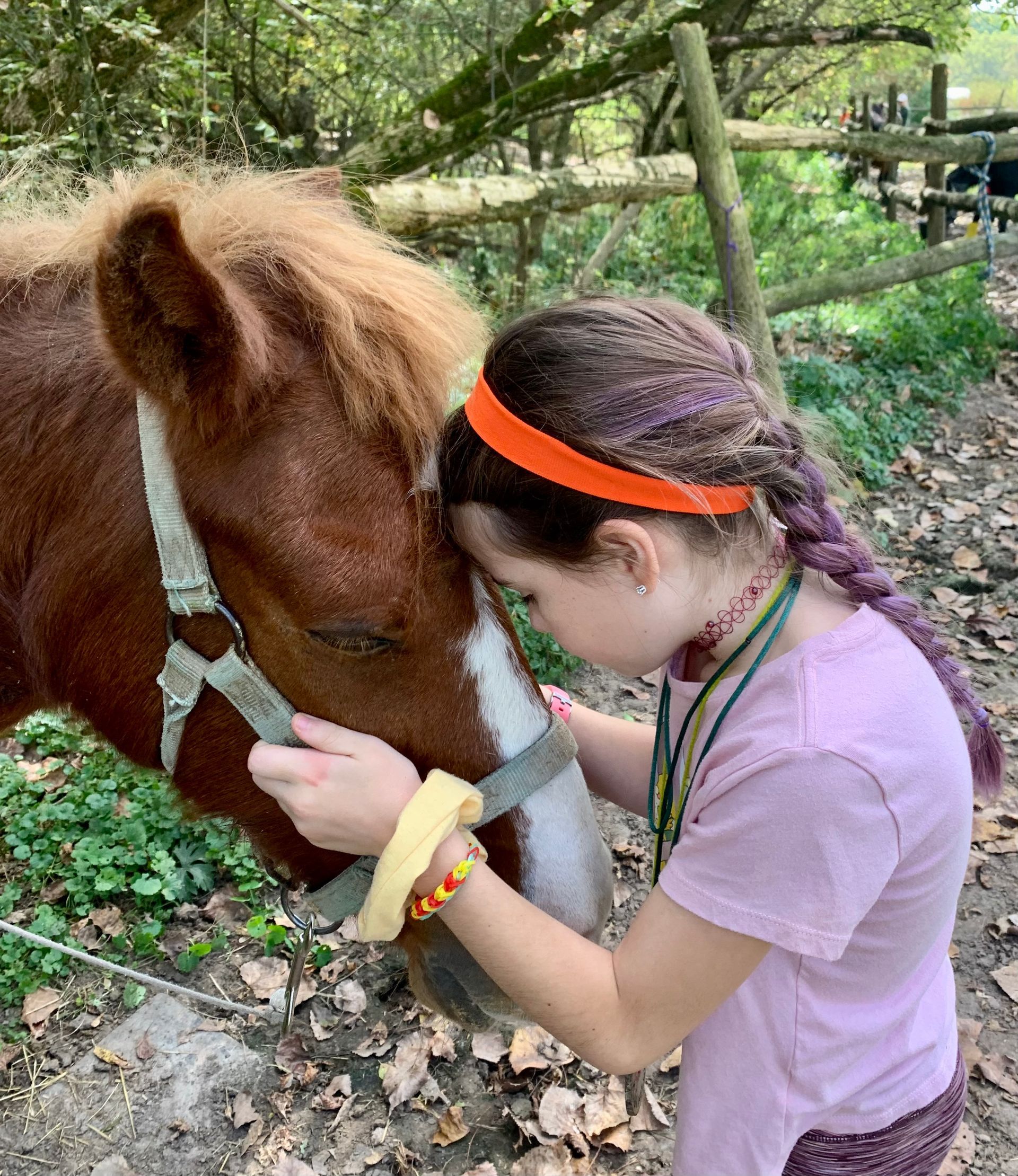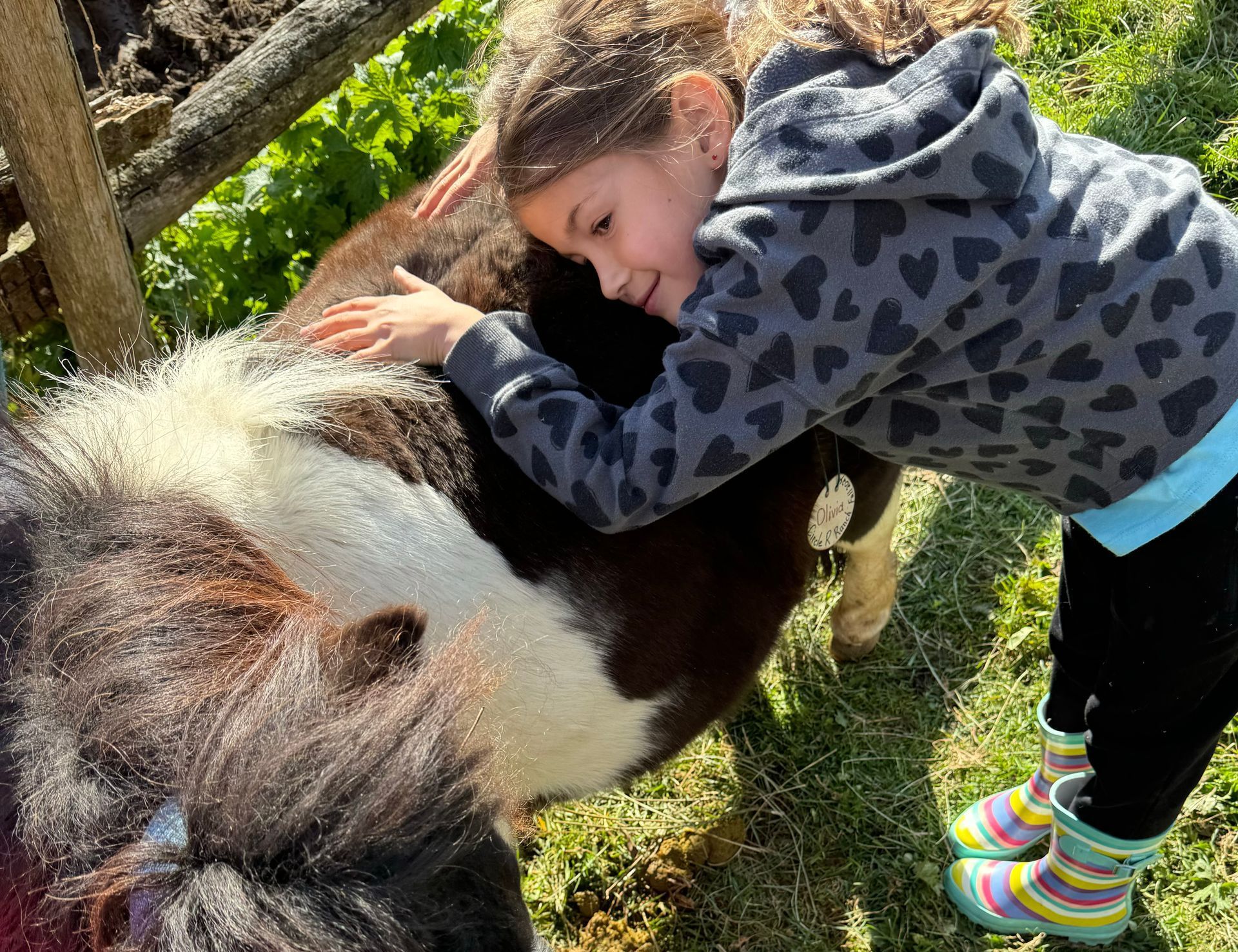Why Bunnies?
Rabbits teach impulse control through gently helping a child draw their body to stillness. Children quickly learn they can prolong the time a bunny sits on their lap, the quieter they become. As prey animals, rabbits are highly sensitive to their surroundings. They will clearly communicate through their posture and behaviour when they feel safe or threatened. This provides a unique opportunity for children to develop their capacity to focus and calm their body, heart and mind. They can also cultivate essential non-verbal communication skills for forming friendships and positive relationships with others. I’ve noticed that there is a “softening of the heart” that often occurs when a child holds a rabbit. The connection that is formed through the stillness and quiet that they share inspires relaxation, empathy and feelings of peace.




